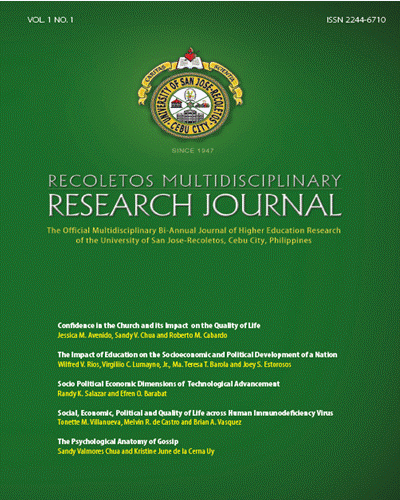From Fractal Geometry to Statistical Fractal
DOI:
https://doi.org/10.32871/rmrj1301.01.09Keywords:
fractal geometry, fractal statistics, fractal dimension, scale- invariance, self- similarity, probability distributionAbstract
The development from fractal geometry to fractal statistics was established in this paper. Interesting features such as self similarity, scale invariance, and the spacefilling property of objects (fractal dimension) of fractal geometry provided an enormous groundwork to build a link towards the statistical paradigm since most data sets are endowed with its non-normal and irregular characteristic. A new probability distribution called fractal distribution was modeled to accommodate this non-normal conforming characteristic of most data sets and sample investigations were presented at the end of the paper.
References
Organization Advancement and Economic Improvementâ€, Asian Social Science.
Barnsley, M. (1988). Fractals Everywhere. San Diego, CA: Academic Press Inc.
Borres, M. et al. (2013). Some Results on Multifractal Spectral Analysis. Unpublished manuscript.
D. Rendon. (2003). Wavelet based estimation of the fractal dimension in fBm images, First International IEEE EMBS Conference on Neural Engineering 2003 Conference Proceedings CNE-03, ieeexplore.ieee.
org/xpl/mostRecentIssue.jsp?punumber=8511
Li, Q., et al. (2002).Computer vision based system for apple surface defect detection, Computers and Electronics in Agriculture.
Padua, R., et al. (2013). Statistical Fractal Inference. Unpublished manuscript.
Padua, R., et al. (2013). Statistical Analysis of Fractal Observations: Applications in Education and in Poverty Estimation. Unpublished manuscript.
Sun, W., et al. (2006).Fractal analysis of remotely sensed images: A review of methods and Applications.
Downloads
Published
How to Cite
Issue
Section
License
Copyright of the Journal belongs to the University of San Jose-Recoletos


